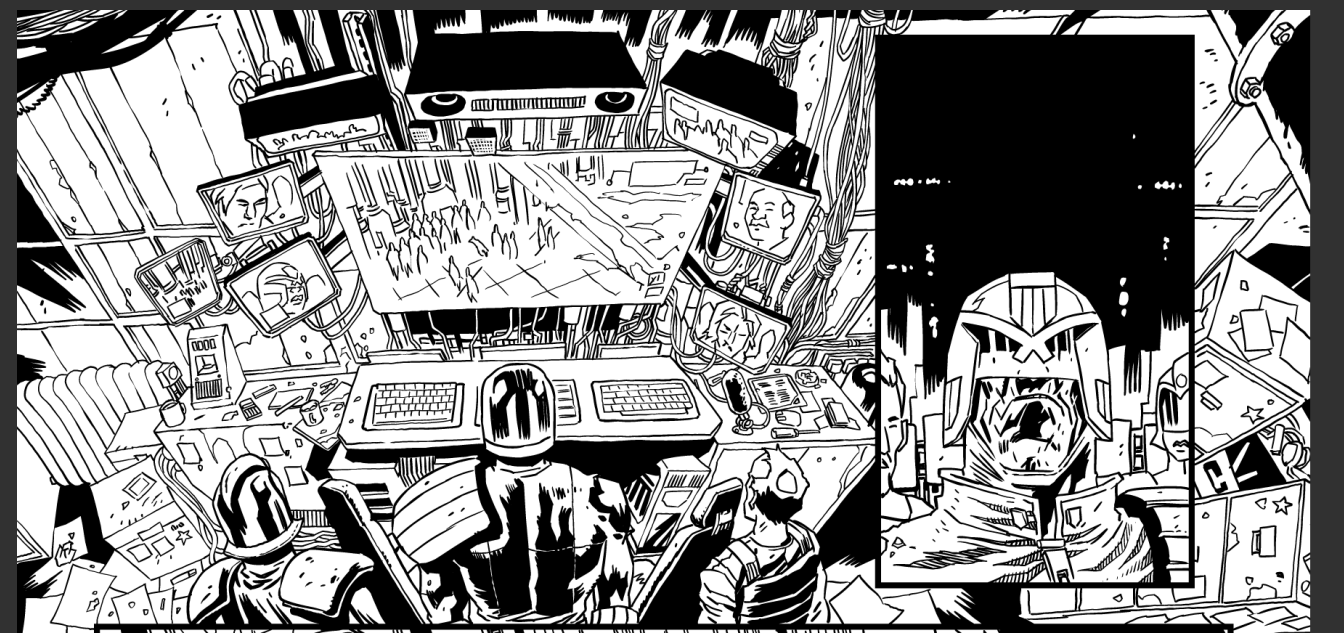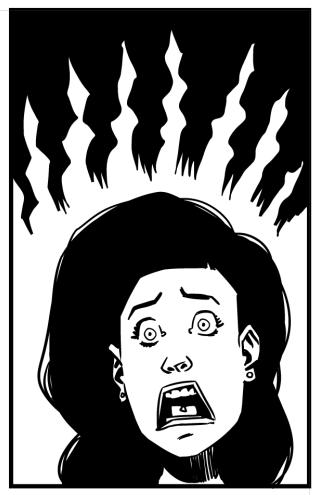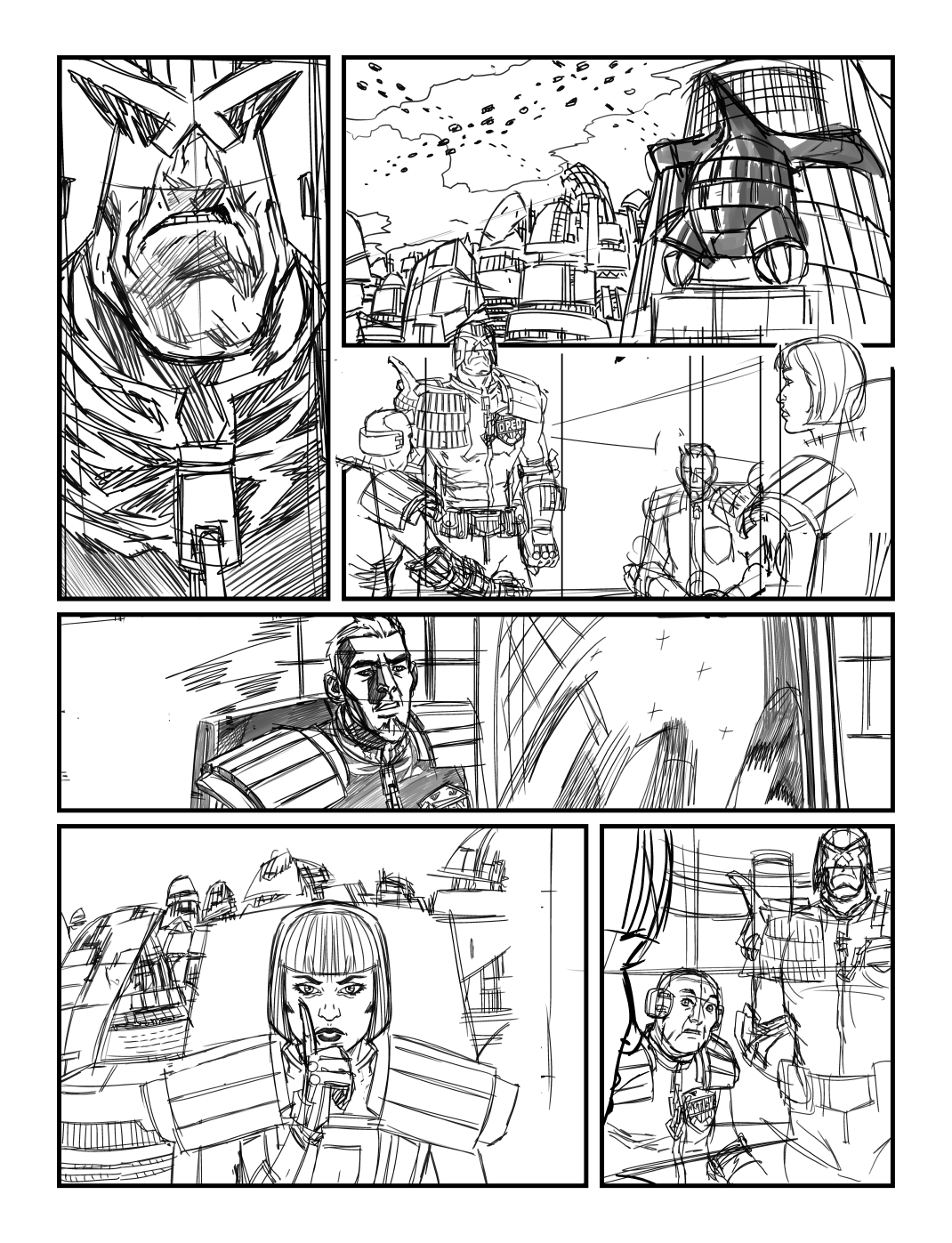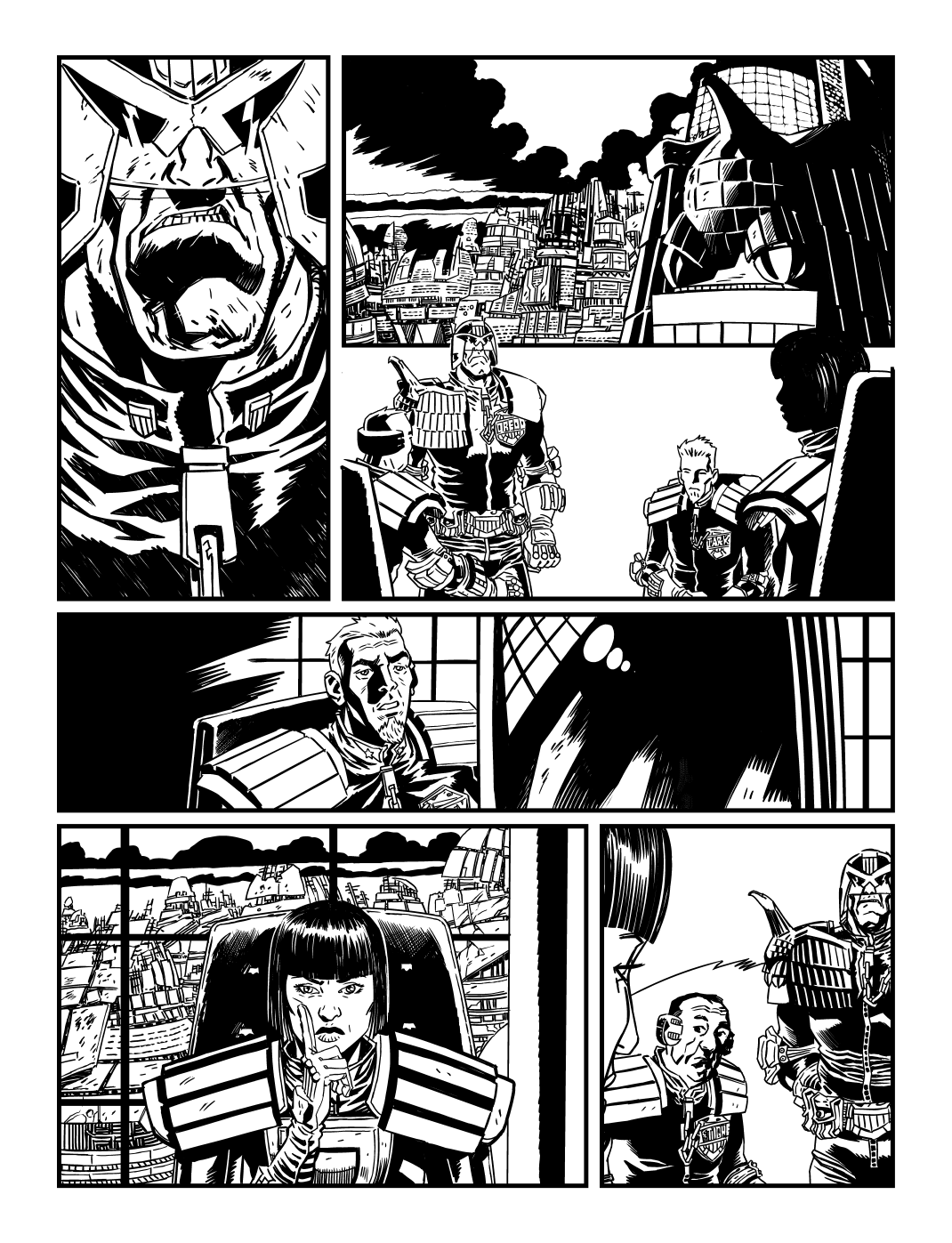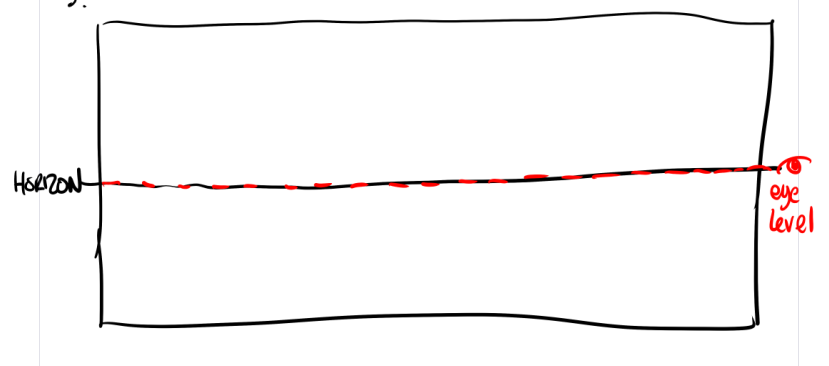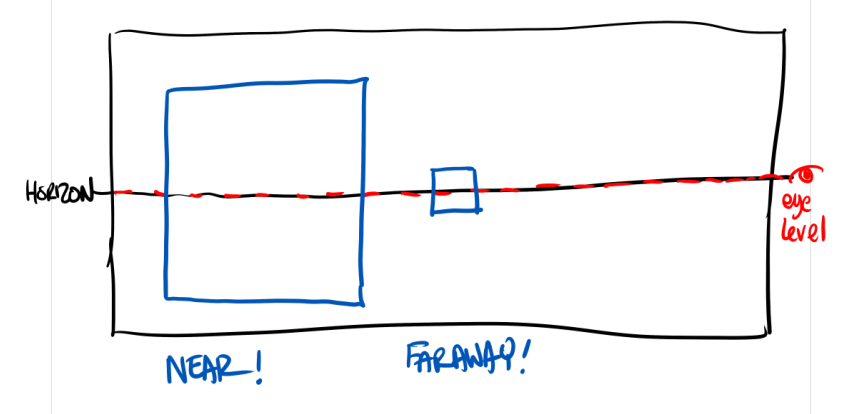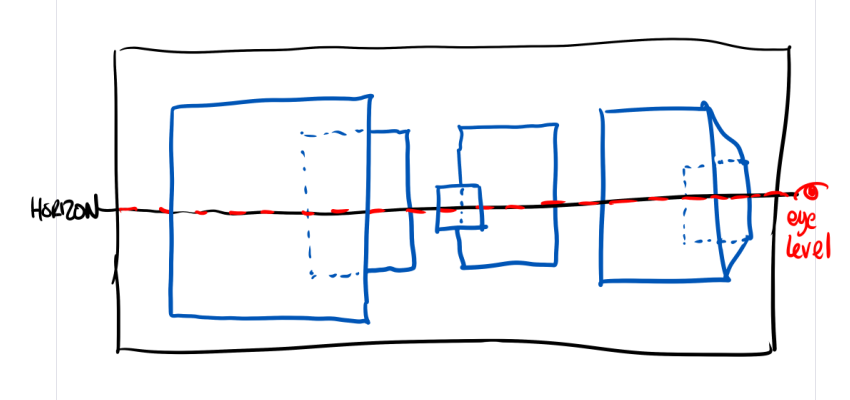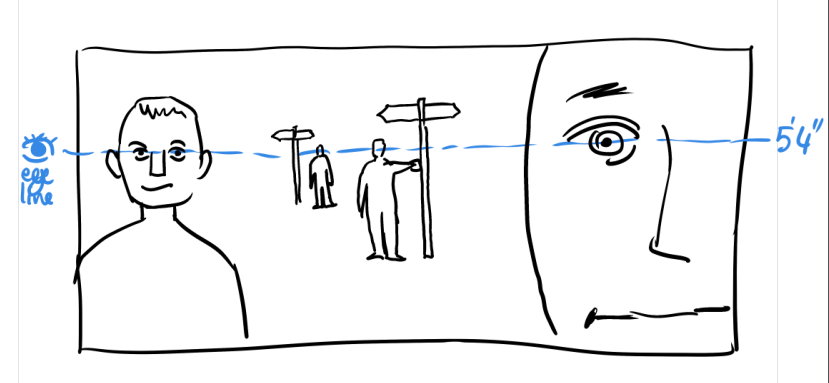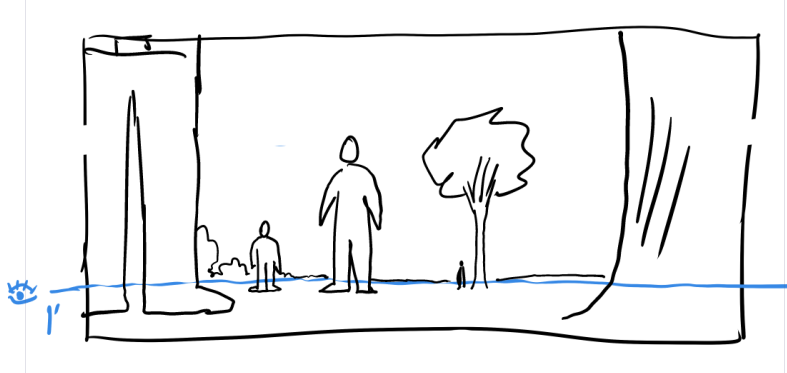Sometimes a writers script will call for a crowd of people, or a crowd of tanks or some other crowd.
As the artist your job is to make the final call on whether that crowd is absolutely necessary.
Say you’re drawing a crowded scene in a prison, our hero (let’s call him Alex) has a bruising argument with a big tough prisoner (let’s call him Brute).
Panel 1: crowd of prisoners, we see Alex and Brute. Brute is walking towards Alex.
Panel 2: same crowd. Brute confronts Alex.
Panel 3: crowd. Alex shrugs.
Panel 4: Crowd. Brute Grab grabs him by collar, Alex looks surprised.
Panel 5: Crowd. Alex lands a punch, brute goes down.
Ok, now we have a crowd in every scene. But the story isn’t that there’s a crowd. The story here is the confrontation between Brute and Alex. That said we DO need to establish a crowd.
So, my parsing of this might be:
On the left, on the right where I’ve dropped the crowd out.
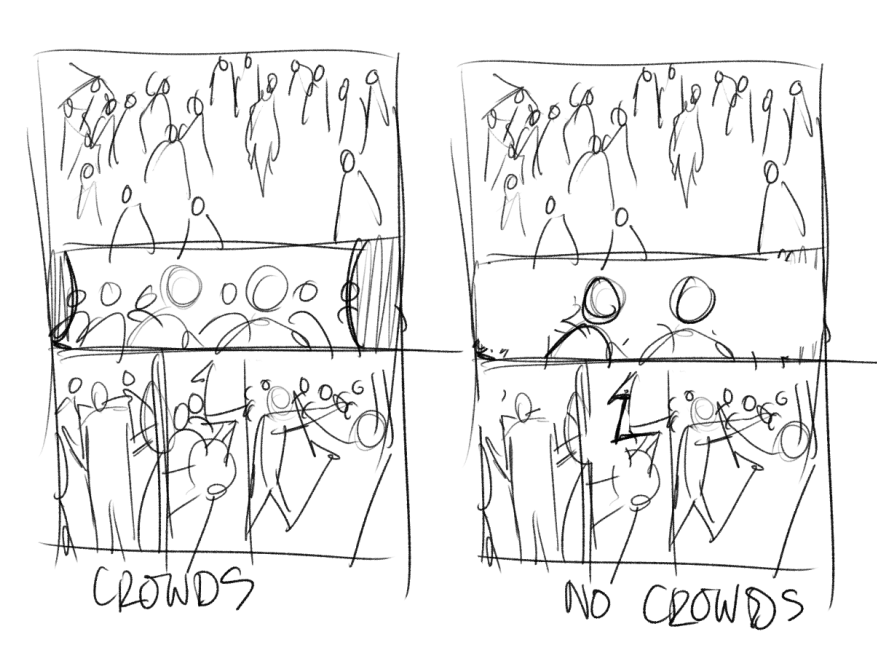
The heart of this story ISN’T the crowd of prisoners (though it’s important for setting the scene).
Let’s talk through the crowds version first.
Panel one, I’ve done a top down shot (this helps build the idea of a prison, because it feels like a security cam view) I’ve also placed the crowd AROUND Brute and Alex, with the crowd just milling in no direction, but Brute and Alex focused on each other (that may not be apparent in the very rough sketch, but that’s certainly how I picture it). Long distance.
Panel two, two foreground prisoners help frame the action, background characters mill around. Mid shot
Panel three, Alex shrugs, crowd behind (these shots are pretty clear on-the-nose). Mid-to-long shot.
Panel four, close up of the grab. (Close up pulls us right in, it also, handily, fits better in that panel that a distance shot).
Panel five, pull out for reaction. Mid-to-long shot.
I’m building a rhythm of shots – trying to make sure, unless we’re doing it for a specific purpose, that we don’t have two of the same shot length together (one page, one action scene, with an establishing shot, makes it easier to do that without it feeling jarring).
We have two characters that are ignoring the rest of the world, and the rest of the world is ignoring them, so dropping the crowds on the second, third and fourth panels here makes sense.
It all helps give, in the reader, a sense of intimacy – the reader is no longer part of an amorphous crowd but is, in fact, listening intently and focusing on the protagonists. (I find dropping background, and panel borders helps do that too)
On the fifth panel, I bought the crowd back because, it’s a reasonable expectation that prisoners would react if a fight actually started.
On the ‘no crowds’ version, I’ve kept the artwork identical, but, panels one and five aside, I’ve dropped the crowds. This helps the reader feel like they’re drawn in to the conflict between Alex and Brute, their focus is entirely on those characters. Panel 1 I kept the crowd because, well, it’s an establishing shot and is neccessary to give us a sense of where we are. Panel 5, we needed to bring the crowd back in and the percussive action of a punch gives us a good natural, non-jarring moment to make the crowd visible again. (I say non-jarring, the punch itself is supposed to be jarring, so anything you can ladel in to that give it more impact, the better). Also at this point the crowd can be reacting.
Now, let’s say the script called for a third character (“Toad”) who’s listening in on the conversation. He doesn’t take an active part but DOES pay attention (and on the final panel he scurries off when the punching begins).
In that instant it’s important, firstly to spotlight him a bit in the first panel crowd scene (here I’ve tagged the important characters in the first panel as drawn, you can see, I think, how I’ve drawn the crowd to frame those characters) from then on, probably a good idea to keep him on panel 2 as a background player, and then we can drop him as the action unfolds until panel 5 when we see the crowd and Toad. It could look like this:

Panel one, having toadie back to us, watching the action (where the others are milling around) and shaded darker, so he looks important despite being in the crowd)
Panel 2, toadie without a crowd looked a little odd, so I’ve added the crowd back, but largely as an amorphous blob representing a crowd – nothing filled in, in this instance it probably works better as a filled colour (if the strip was being coloured) or as a pure white blob, rather than a black silhouette.
Anyway, never take the writer’s word for it – sometimes you don’t need to draw EVERYTHING.



